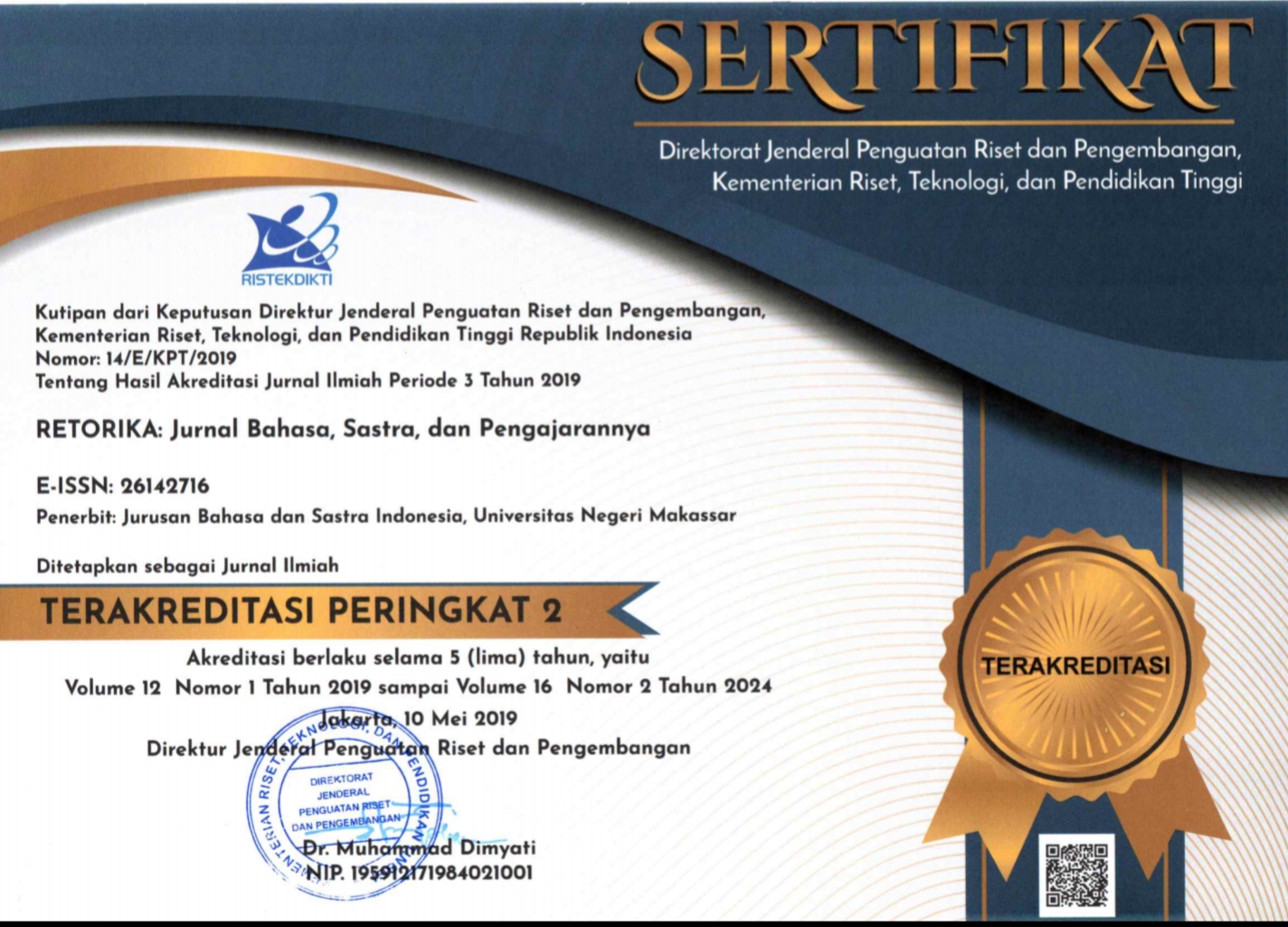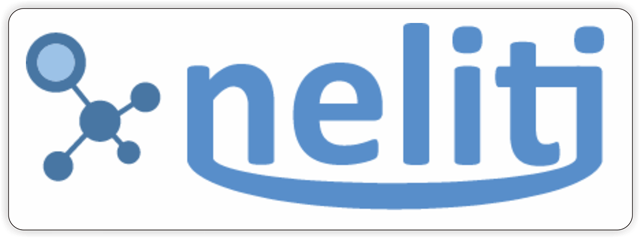THE EFFECTIVENESS OF THE IMPLEMENTATION OF CRITICAL DISCOURSE ANALYSIS INSURANCE ADVERTISING IN ARGUMENTATIVE WRITING LEARNING FOR UNIVERSITY STUDENTS
(1) Universitas Jember
(*) Corresponding Author
DOI: https://doi.org/10.26858/retorika.v13i1.11311
Abstract
Keywords
Full Text:
PDFReferences
Altstie, T. & Grow, J. (2006). Advertising Strategy. Thousand Oaks: Sage Publication
Bühler, K. (1934). Sprachteorie: Die Darstellungfunktion der Sprache. Stuttgart: Gustav Fischer.
Bühler, K. (2011). Theory of Language. Amsterdam/ Philadelphia: John Benjamins Publishing Company.
Fairclough, N. (1995). Media Discourse. London: Edward Arnold
Gee, J.P. (2011). “Discourse Analysis: What Makes it Critical” dalam Rogers, R. (Ed.). An Introduction Critical Discourse Analysis in Educatian. Hlm. 23—42. Edisi kedua. New York: Routledge
Goddard, A. (1998). Tha Language of Advertising. London: Routledge
King, A. & Martin K. (1990). The Control of Language: A Critical Approach to Reading and Writing. Adelide: Longmans
Lam, Y. W., Hew, K. F., & Chiu, K. F. (2017). Improving argumentative writing: Effects of a
blended learning approach and gamification. Language Learning & Technology, 22(1), 97–118.
https://dx.doi.org/10125/44583
Martutik. (2012). Pesan Persuasif dalam Wacana Iklan Advertorial Media Massa Cetak. Disertasi, Program Studi Pendidikan Bahasa Indonesia, Program Pascasarjana, Universitas Negeri Malang
Maynard, S.K. (2002). Linguistic Emotvity: Centrality of Place, the topic Comment—Dynamic and Ideology of Pathos in Japanese Discourse. Philadelphia: John Benjamin Publising Company
Javadi, J., & Mohammadi, M. (2019). The Effect of Critical Discourse-Based Instruction on
Iranian English Major Students’ Reading Comprehension. International Journal of Instruction, 12(1), 33-52. https://doi.org/10.29333/iji.2019.1213a
Jonassen, D. H., & Kim, B. (2010). Arguing to Learn and Learning to Argue: Design Justifications and Guidelines. Education Technology Research and Development, 58(4), 439–457.
Ka-kan-dee, M., & Kaur, S. (2014). Argumentative Writing Difficulties Of Thai English Major Students. WEI International Academic Conference (pp. 193-207). Bali, Inonesia: The West East Institute.
Ka-Kan-Dee, M. (2015). Analysing EFL Students’argumentative Writing Difficulties and Teachingstrategies Employed by Lecturers in Selected Universities In Thailand. Kuala Lumpur: Universiti Sains Malaysia.
Keraf, G. (2010). Argumentasi dan Narasi. Jakarta: Gramedia Pustaka Umum.
Kuhn, D. (1991). The skills of argument. Cambridge, UK: Cambridge University Press.
Nippold, M. A., & Ward-Lonergan, J. M. (2010). Argumentative writing in pre-adolescents: The role of verbal reasoning. Child Language Teaching and Therapy, 26(3), 238-248.
Nussbaum, E. M., & Kardash, C. M. (2005). The Effects Of Goal Instructions And Text on The Generation of Counterarguments During Writing. Journal of Educational Psychology, 97(2), 157–169.
Waugh, L.R. (1976). Roman Jakobson’s Science of Language. Lisse: The Peter de Ridder Press
Article Metrics
Abstract view : 843 times | PDF view : 128 timesRefbacks
- There are currently no refbacks.
Copyright (c) 2020 Rusdhianti S.Pd. Wuryaningrum

This work is licensed under a Creative Commons Attribution-NonCommercial 4.0 International License.
Published by:
Department of Indonesian Language, Faculty of Languages and Literature, Universitas Negeri Makassar in cooperate with Asosiasi Dosen Bahasa dan Sastra Indonesia (ADOBSI) and Ikatan Program Studi Pendidikan Bahasa dan Sastra Indonesia (IKAPROBSI).
Address: Department of Indonesian Language Office, DG Building Second Floor, UNM Parangtambung, Daeng Tata Raya Street, Makassar, South Sulawesi, Indonesia
 Email: retorika@unm.ac.id
Email: retorika@unm.ac.id

RETORIKA: Jurnal Bahasa, Sastra,dan Pengajarannya is licensed under a Creative Commons Attribution-NonCommercial 4.0 International License.
















